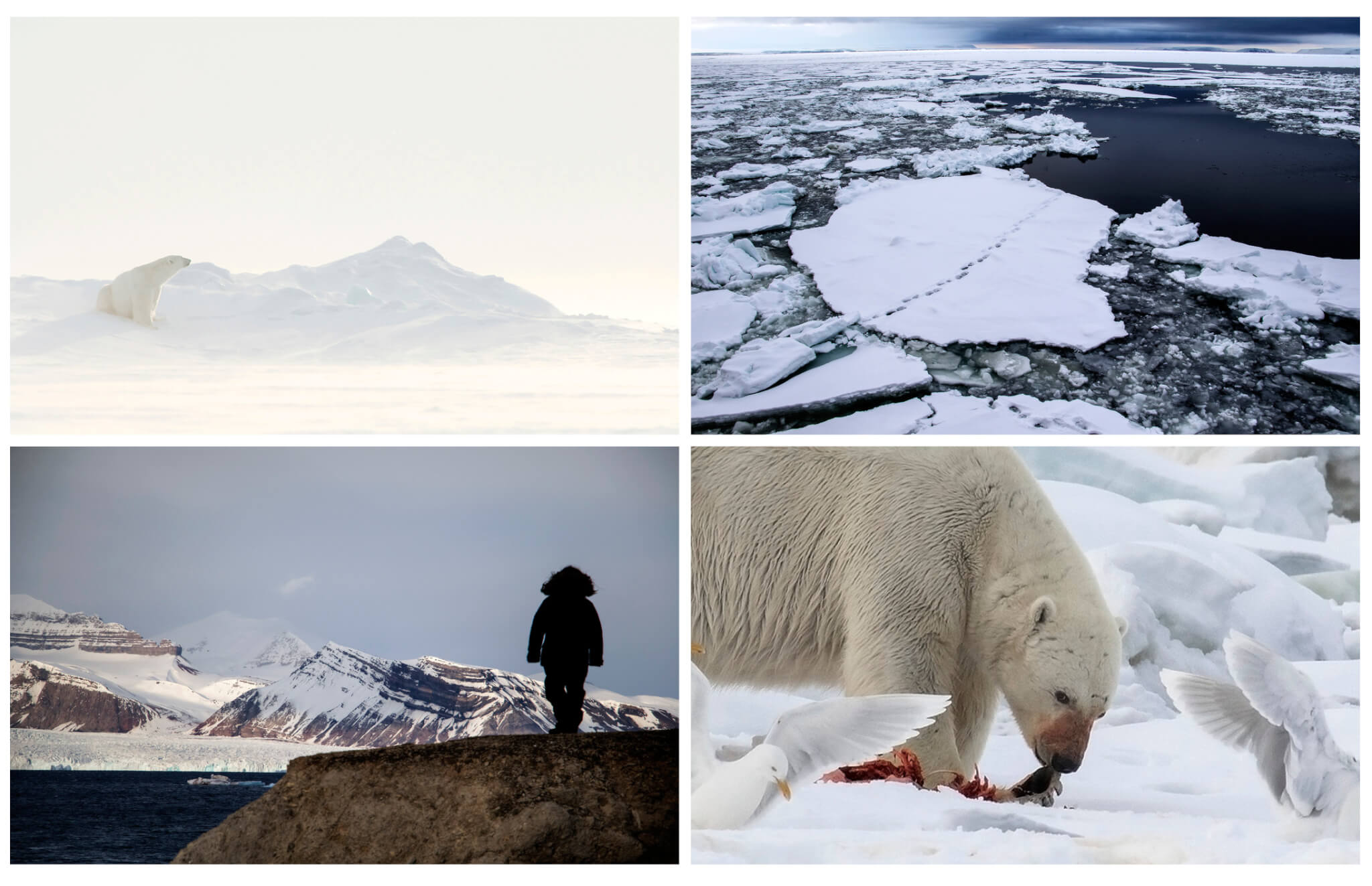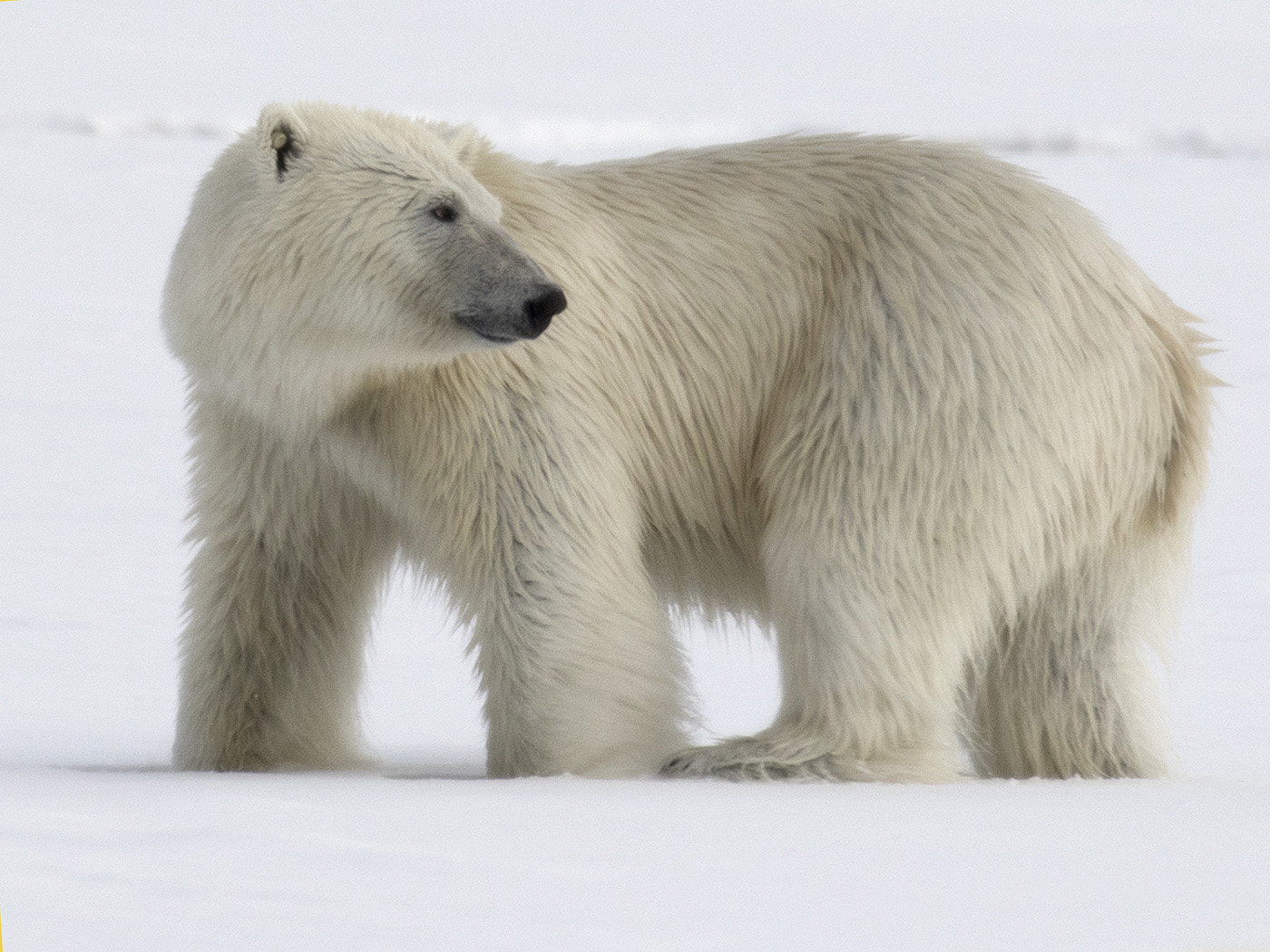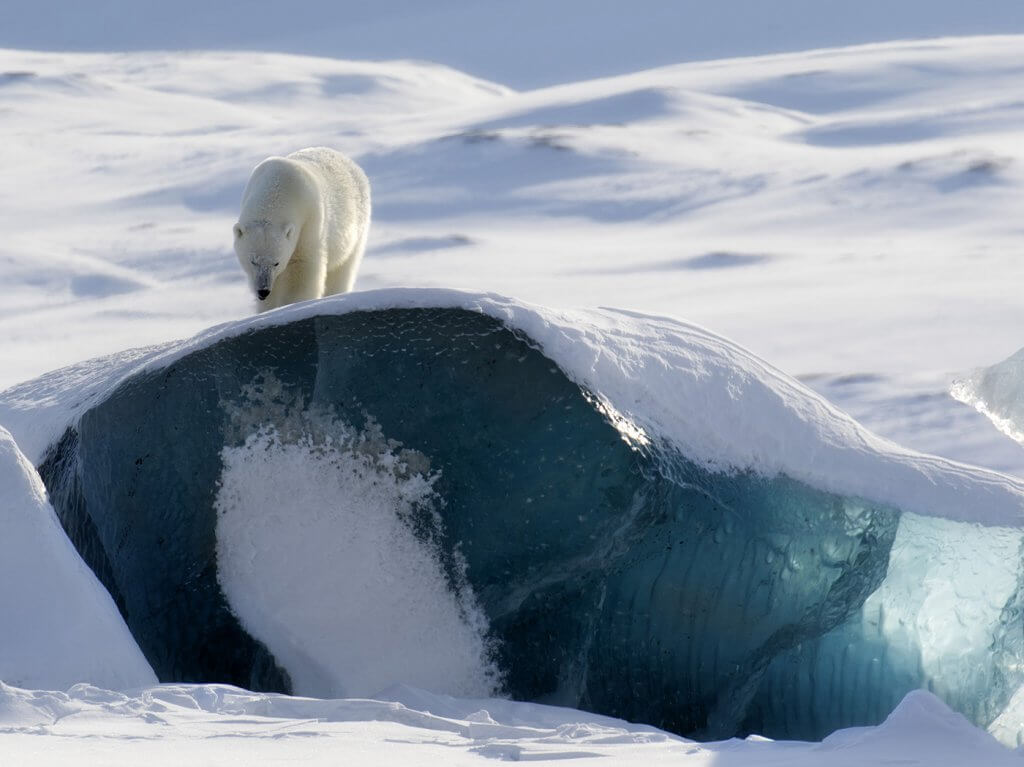The polar bears of Svalbard
Svalbard is not exactly a hospitable place. In the capital, Longyearbyen – the main, though small, settlement of just 2,000 people – polar night lasts from the 26th of October to the 15th of February. That’s nearly four months. Glacial ice covers 60% of the land with the rest a combination of barren rock and tough, scrubby vegetation. The temperature peaks at around 6°C in the 'height' of summer. Winters are around -12°C, but can feel much colder when the islands are battered by strong winds. And it’s one of the only places in the world where humans are prey. And the predator? The mighty polar bear.
Fredrik Granath has been documenting Svalbard’s polar bears for around 15 years. With a background in advertising and design, he’s perhaps not the most obvious polar bear pioneer. But after his first trip to this harsh, barren island he fell in love.
One of the amazing things with the Arctic is the light, especially when the sun comes back in the spring. The colours are spectacular. You feel as though you’re in a wonderful dream. And of course there are the polar bears.

He says this almost as an afterthought, as if this awesome creature was only partly responsible for his now 15-year long love affair with Svalbard. In fact, it’s all about the polar bear.
“After my first trip to Svalbard I released there was no book specifically about the islands and their wildlife, not in the way I thought a book could look anyway. I wanted to tell a different story.”
And using his design and communication skills and teaming up with a wildlife photographer, Fredrik produced his book in 2007. Vanishing World: The Endangered Arctic is a spectacular photographic journey into the increasingly threatened lives of the animals that call Svalbard home. And it’s stunning. But the stories it tells are tragic.
Fast forward to 2016. Fredrik returned to Svalbard along with his partner and photographer Melissa Schäfer to begin work on a new book: Ground Zero.
“Ground Zero is about telling the story of climate change through the eyes of a polar bear. It’s not about facts and figures – we all know climate change is happening. This book will be about emotionally connecting people to nature. In this way, we hope people will truly come to care about, and want to protect, a region of the world they will most likely never visit. The Arctic and the polar bear are thermometers for the climate. And they are painting a clear picture of our future.”

But while travelling through the region collecting material for Ground Zero, while Fredrik was showing Melissa all the things he had seen and come to love, he felt as though he was seeing everything for the first time. And they were sharing these special moments together. These moments were telling a personal story but also the story of the plight of the polar bear and its threatened environment. And so while the idea had been to focus on Ground Zero, a new book began to emerge.
We don’t have a name for it yet. But it’s a book about moments,” says Melissa. “Everything from arriving on Svalbard, meeting Helen (the polar bear that Melissa named and which later enjoyed fame when Leonardo di Caprio shared her image), the northern lights, accidents, crazy polar bears. It’s like a scrapbook, comprised of moments that together tell a bigger story.
And that story is about change.
“Over the years the changes on and around Svalbard have been dramatic and brutal,” says Fredrik. “Areas that 10 years ago were accessible by foot, can now only be reached by boat.”
Svalbard’s ecosystem is about to collapse. The Arctic climate is on the verge of giving way to something different. And this is not just problematic for polar bears; it threatens their very existence. They will have to choose between staying put and surviving on less and less food each year, or moving and risking death in the process. It’s like being stuck between a rock and a hard place.

“There are some crazy statistics about how far polar bears move,” says Fredrik. “There was this one bear that stayed on land for the summer when the sea ice receded. She had no food for three to four months. Then suddenly she just jumped into the sea and swam due north for three days, non-stop, until she reach pack ice. She gorged on seals for three weeks. Then, just as suddenly, she jumped back into the sea and swam to the exact same spot on Svalbard where her journey had begun. She climbed up the side of the fjord, dug a hole and went underground. A few weeks later she gave birth to two cubs. There are loads of stories like this. Every polar bear has its own character and personality. It’s own story to tell.”
And it’s these personalities that keep drawing Fredrik, and now Melissa, back to Svalbard.
I’ve had some close calls with polar bears. Some were pretty scary. But others were just amazing.
Much like Melissa’s first close-encounter. “We saw this polar bear from around 2km away but she started to walk towards us and I knew she’d come to us,” says Fredrik. “But you have to keep a safe distance and I was wary for Melissa. But this bear just stopped around 100m away. She then walked right up to this stunning piece of blue glacial ice – a photo piece in its own right – and started playing in the snow. She was basically posing for us. It was perfect. And it felt like a safe distance for all of us. She didn’t come any closer than that.”

Fredrik is completely self-taught. He has learned to read a polar bear’s movements. He can judge what they might be about to do. And he always remains calm. Safety always comes first. This is his life. And it’s a life he’s introduced Melissa to.
Being on Svalbard, with the polar bears is as much our life as it is our work. You live with it and you sleep with it. But it’s incredibly rewarding.
We’ll be sharing some of Fredrik’s and Melissa’s “moments” with you over the year and of course we’ll keep you updated on the status of their books.
You can follow them on Instagram here:
https://www.instagram.com/fredgranath/ and https://www.instagram.com/melissa_schaefer/
Meet the adventure photography master
From erupting volcanoes to lightning storms, it’s all in a day’s work for Fredrik Schenholm.
Leave no trace
Find out how our events live up to the seven Leave No Trace principles.
